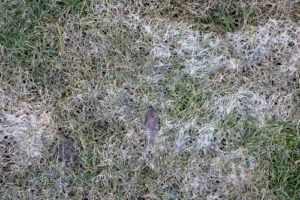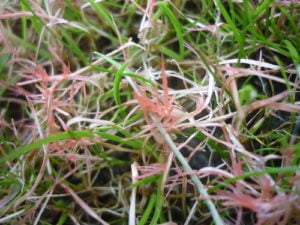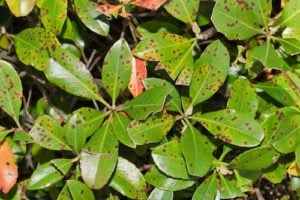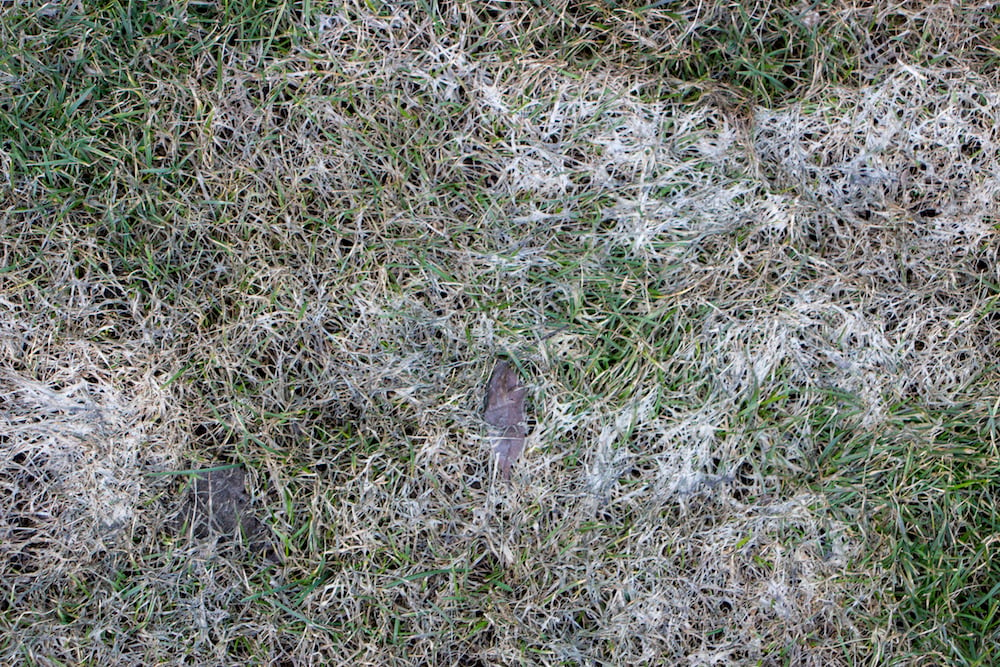Spring is almost here and with it comes lawn diseases that can creep up at the start of the season.
You likely put a lot of time and effort into ensuring your lawn is well cared for, and as a result, finished last season with a lawn full of lush green grass. But, no matter how well you cared for your lawn last season, there is always a risk that spring lawn diseases can spread and damage your lawn as soon as the weather warms.
As the snow begins to melt, keep your eye out for these common spring lawn diseases in Michigan.
Common Spring Lawn Diseases: Snow Mold
Snow mold is a fungal infection that grows in extremely low temperatures, which Michigan’s winters are known for. The fungal infection usually presents in two ways: gray and pink snow mold.
Gray mold attacks the blades of grass and doesn’t cause much damage to the roots. Pink mold is more severe and attacks the entire plant, which makes it more difficult to reverse the damage. Both types of molds can also remain dormant and resist the summer’s high temperatures.

Gray snow mold. Source: Getty Images.
These fungal infections leave circular patches that look like straw on your lawn. Both look the same, but gray snow mold causes hard growths to develop on the crowns and leaves of the grass.
For minor snow mold issues, you might be able to alleviate the problem by raking your grass. More severe issues may need a fungicide treatment applied.
Common Spring Lawn Disease: Red Thread Disease
Red thread disease is a fungus that thrives on grass that has a lack of nutrients. You’ll recognize this infection by the red or pink fibers that are around the stems and leaves of the plant. As the infection progresses, the red fibers grow into circular clumps ranging from 4 to 8 inches in diameter.

Red thread disease. Source: Kris Lord, Flickr, CC By 2.0.
You can treat a minor red thread disease infection by aerating your lawn and applying fertilizer. More severe infections may require a fungicide treatment.
Common Spring Lawn Disease: Leaf Spot Disease
Michigan’s cool, moist climate makes it a perfect environment for fungal lawn diseases, and chief among these issues is leaf spot disease. This fungal infection causes leaf damage and then makes the roots rot. If it’s not controlled quickly, it can destroy a wide range of grasses.
During the first stages of the disease, you might notice tan or brown lesions on the leaves of your grass. As the infection progresses, the lesions may turn black or dark brown.

Leaf spot disease. Source: Getty Images.
If you don’t address the lesions, your lawn will experience root rot, which makes your turf die in large patches.
Fertilization and aeration can help prevent leaf spot disease as can strategic watering. However, if your lawn is experiencing leaf spot disease, it will need a fungicide application.
Want to make sure your lawn is ready for spring? Request a free quote today.
